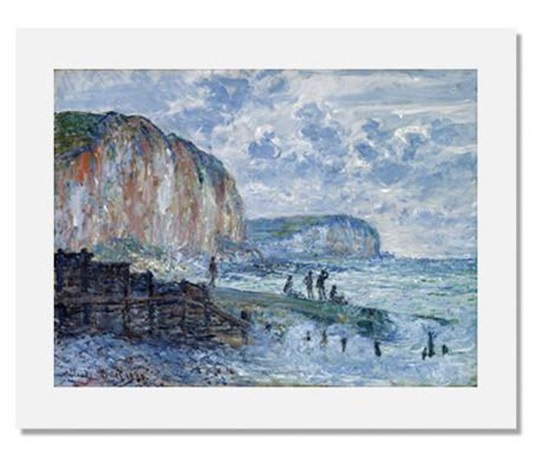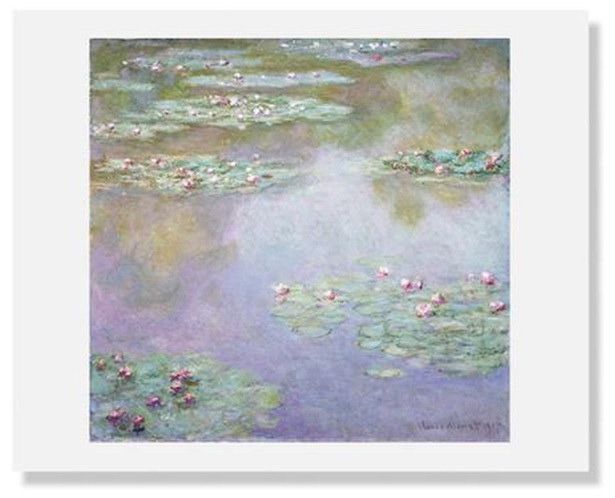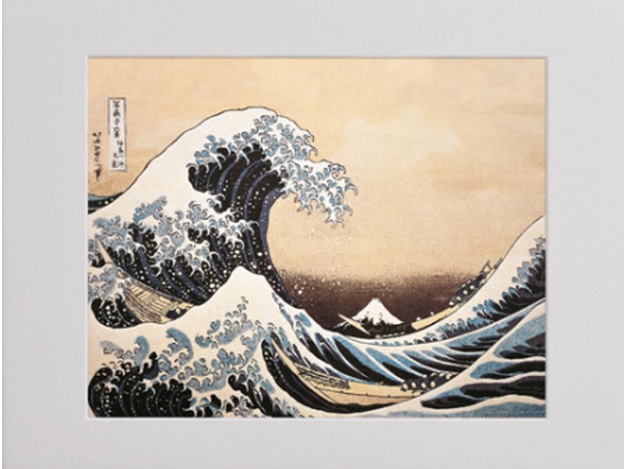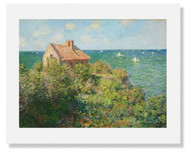Monet Art Prints Every Lover of Art Should Have
Dec 7th 2022
When it comes to the great artists throughout human history, one of the names that often comes to mind is Monet. A household name in his own right, Claude Monet wasn’t always celebrated, particularly during his time. And yet today, we can’t help but marvel at his work and the wonder and beauty behind them all.
If you’re here to check out Monet art prints, Claude Monet may not need an introduction. However, it’s still good to know some important facts about this iconic artist and the art movement that he proliferated.
So before you start shopping through our selection of Monet art prints, we recommend taking some time to get to know the artist a little better.
Who is Claude Monet?
Born in November of 1840, Claude Monet is a French painter is founder and leader of the Impressionist movement, an art movement that also includes the likes of Pierre-Auguste Renoir, Camille Pissarro, Edgar Degas, Marie Bracquemond, Mary Cassatt, and more. In fact, the term “Impressionism” was derived from one of his paintings, titled, Impression, Sunrise.
He had a profound interest in depicting landscapes and the outdoors, so much so that he was a prime practitioner of the “en plein air” or painting outdoors. It was his quest to capture nature that he even purchased a property in northern France where he spent a lot of his time landscaping and planting water lilies.

Characteristics of Impressionist Art
An art movement that rose to prominence in the 19th century, Impressionism is a style of painting developed in France that’s characterized by the following:
1. Quick, thin, yet bold and visible brush strokes
The main purpose of these short yet thick brushstrokes is to be able to quickly capture the essence of the subject. Artists often focused more on the impression of the subject rather than the accuracy of certain details.
2. A focus and emphasis on the depiction of natural light
Impressionists chose to pay closer attention to the play and movement of natural light. In fact, Monet’s own haystacks are a prime example of his dedication to the study of lighting. This, of course, meant that many Impressionists would often find themselves painting outdoors, in the countryside. This characteristic of Impressionist art is called, “en plein air”, wherein artists would work towards capturing a fleeting moment or impression of that moment in time.
3. Unblended colors applied side-by-side
Another important characteristic of Impressionist art is the use of unblended colors. Colors were instead applied side-by-side, using a little mixing as possible. This method of using complementary colors next to one another helped to give their paintings that more vivid and vibrant edge.
4. Avoidance of Black
In addition to the fact that they avoided mixing colors as much as possible, Impressionists also chose to avoid the use of black. This can be seen as a kind of response to Realism, the art movement before Impressionism. Artists that produced during the Realism movement typically used blacks, grays, and browns. This gave their paintings much darker tones.
Impressionist paintings, in general, were bright in comparison. This is also due to the fact that one of their focuses was, in fact, to capture the movement of natural light. That said, many Impressionist paintings were done in hues from the light spectrum: red, orange, yellow, blue, indigo, and violet.
What is Claude Monet’s Most Famous Piece?
Impression, Sunrise is considered to be Monet’s most famous piece. Of course, this is most likely due to it being the namesake for the Impressionist movement. First displayed in an exhibition in 1874, Impression, Sunrise was satirically implied by Louis Leroy to be a sketch in his article, “The Exhibition of the Impressionists”.

Monet’s Water Lilies
Other famous paintings of Monet include his Water lilies series, which were a set of paintings produced in his own garden. Monet’s Water Lily series featured about 250 pieces, all of which were painted from his home in Giverny, all throughout the last 30 years of his life.
The inspiration to build this garden and the famous pond where he planted water lilies is partly due to the influence of ukiyo-e Japanese art.
Ukiyo-e is a Japanese art style that flourished between the 17th through the 19th centuries. Among the works produced during this period is Hokusai’s own The Great Wave off Kanagawa and Hiroshige’s The Fifty-three Stations of the Tōkaidō.

Ukiyo-e and Impressionists
The influence that Japanese ukiyo-e had on Impressionists was great. In fact, it wasn’t just Monet that was influenced by this art genre. Even his contemporaries, Edgar Degas and Édouard Manet were also impacted by this Japanese art style. What’s more, the influence of ukiyo-e went on to influence Post-Impressionist Vincent Van Gogh.
Putting Monet art prints side by side with Hokusai’s Great Wave, artists would be able to notice just how ukiyo-e was able to make an impact on these French artists and lead them away from the Realism style that had previously pervaded the artist scene.
Monet Art Prints to Collect And Display in Your Home
As art lovers and collectors, it would be amazing to have Monet’s works on display in one’s home. However, not everyone is capable of owning one of Monet’s paintings. Thankfully, art enthusiasts need not be dismayed. After all, that’s what Monet art prints are for.
If you’re looking to procure some Monet art prints, but are on the fence about which ones you should get, we recommend choosing between the following:
- Water Lilies
- Fisherman’s Cottage on the Cliffs at Varengeville
- Cap Martin
- Antibes
- Valley of the Petite Creuse
- View of the Sea at Sunset
- Woodgatherers at the Edge of the Forest
- Road at La Cavée Pourville
Of course, there are a lot more Monet pieces whose beauty is equally worth adorning in your homes, offices, or businesses. If you have any questions and concerns, then, regarding the prints that we offer, feel free to contact us at webcustomerservice@mfa.org.

